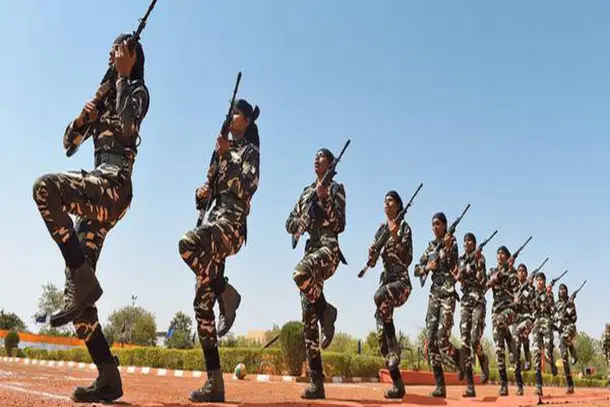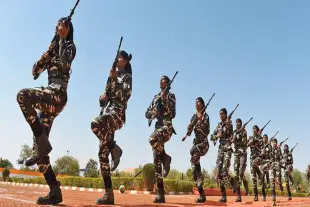Ideas
Agnipath Scheme Can Be Improved, But Critics Who Don't Have Better Ideas Should Shut Up
R Jagannathan
Jul 05, 2024, 11:14 AM | Updated 11:13 AM IST
Save & read from anywhere!
Bookmark stories for easy access on any device or the Swarajya app.


The Agnipath scheme to induct younger people into the armed forces, but on a shorter tenure of four years, has come under political attack. It has also been opposed by some retired members of the armed forces.
While Rahul Gandhi wants to scrap the scheme fully, recently two former Navy chiefs have questioned it. Some time back, a retired army general also called for tweaking the scheme to make it better.
Former Chief of Naval Staff Arun Prakash set the ball rolling recently, suggesting that economics should take a back seat when it comes to national security. The sole criterion to be used while allocating resources for personnel and equipment should be “Does it enhance or degrade combat effectiveness?"
Another former navy chief, Karambir Singh, backed him, and said that "The only motivation driving the Agnipath is reducing the pension bill. The fact that this scheme will degrade combat effectiveness is known to all who understand national security."
Now, let us take these criticisms at face value. The main point they are making is that the Agnipath scheme will debase combat effectiveness. Is then the only solution to go back to the old process of selection to the armed forces, with all its attendant costs, including a future heavy pension bill?
Currently, 24 per cent of the defence budget goes to paying pensions, up from less than 13 per cent 15 years ago (see here). Overall personnel costs, including pensions, account for more than 53 per cent of the defence budget, which takes up just over 13 per cent of the overall central budget.
This share has been falling, just as defence expenditure as a share of GDP has been falling and is now well below 2 per cent.
So, Karambir Singh’s claim that rising pension bills are the reason for the government’s launch of the Agnipath scheme may indeed be true, though another aim was to lower the age profile of future recruits into the army.
Under Agnipath, some 25 per cent of Agniveers are to be absorbed into the armed forces after they complete their four-year tenure. Some of the rest may be absorbed in central armed forces and public sector undertakings, but many will be forced to seek private sector employment, possibly at lower emoluments.
The critics cannot have it both ways. You cannot demand higher pensions for retirees, which is what the OROP (one-rank-one-pension) scheme was all about, and still demand that armed forces recruitment must continue as before.
It is fair to call for a review of the Agnipath scheme, and recommend some viable tweaks, but going back to the old scheme makes no economic or even strategic sense.
Reason: even the armed forces need to shift the focus away from mass recruitments to a mix of specialists and a smaller contingent of regular foot-soldiers. This is because future wars will be hybrid in nature, and they will use more technology and equipment, including those powered by artificial intelligence and robots.
The overall numbers in the army need down-sizing, even while the quality of recruits is upgraded to work more with technology and sophisticated equipment, even robots.
This cannot happen if the old recruitment process continues, which can constrict the resources available for buying hardware and software, and for recruiting more specialists in areas like cyber warfare, use of drones, and war robots.
Just in case navy commanders Karambir and Arun Kumar are unaware, this has to happen not only in the armed forces, but other arms of government too. The government simply cannot afford to recruit so many lower level office staff like peons and despatch personnel as in the past.
The private sector is already using more technology and fewer people. One example: consider how many middle positions in bank branches are being eliminated as customers use UPI and other digital modes of banking and payments. Even software services companies are recruiting fewer freshers, and focusing on upskilling existing staff, and inducting more experts laterally.
If these shifts in the private sector and the software services industry are not impacting their business effectiveness, ex-armed forces chiefs must ask themselves why the armed forces cannot maintain or improve their combat readiness even under the new economic realities?
To say that warfare readiness cannot be subjected to normal standards of economic viability is silly. In fact, this is one reason why many armed forces in the world, including the US, use mercenaries and private contractors to aid the war effort, when required. We don’t need to go so far, but we have to think bang for the buck.
The point is not that Agnipath is a good scheme, but maybe the thing to do is to tweak it, and make it more sensible. Maybe, as retired Maj Gen GD Bakshi has suggested, Agniveers should have an extended term of seven years, and the absorption rate increased to 50 per cent instead of the current 25 per cent.
These are possible compromise solutions. If former leaders in the armed forces think Agnipath is bad for combat effectiveness, they must come up with economically viable alternatives.
If OROP is eating into defence budgets, why did they not flag this issue before it was implemented? Why were some former defence staff, including some ex-generals, sitting in dharna on Delhi’s Jantar Mantar demanding an even more generous OROP?
Former generals, air marshals and navy commanders cannot speak with forked tongues. They cannot have their cake and eat it too. They must come up with viable solutions without reducing combat effectiveness.
Just as future wars cannot be fought using tactics that worked in previous wars, the armed forces cannot be run like they were in the past. In any case, the armed forces are not an employment generation scheme.
Jagannathan is former Editorial Director, Swarajya. He tweets at @TheJaggi.





